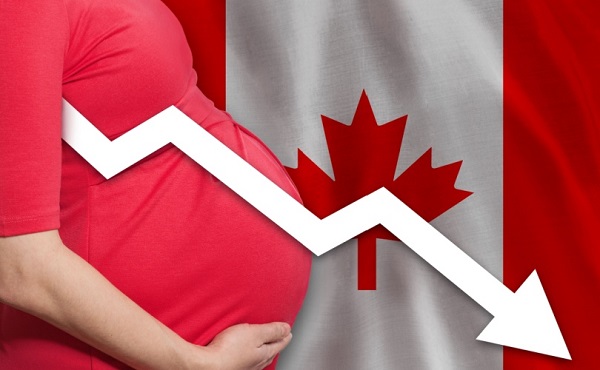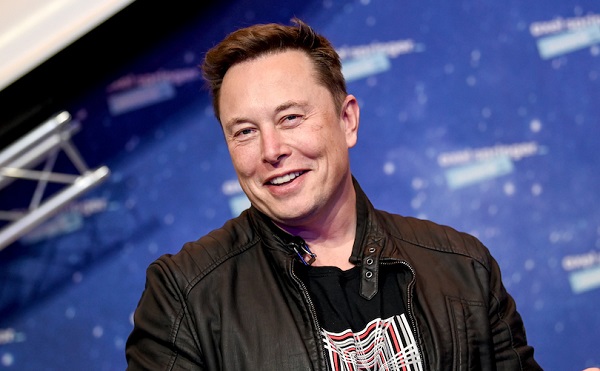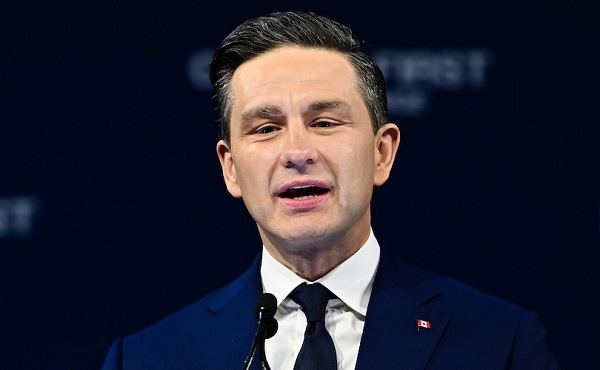Alberta
Calls for a new pipeline to the coast are only getting louder

From Resource Works
Alberta wants a new oil pipeline to Prince Rupert in British Columbia.
Calls on the federal government to fast-track new pipelines in Canada have grown. But there’s some confusion that needs to be cleared up about what Ottawa’s intentions are for any new oil and gas pipelines.
Prime Minister Carney appeared to open the door for them when he said, on June 2, that he sees opportunity for Canada to build a new pipeline to ship more oil to foreign markets, if it’s tied to billions of dollars in green investments to reduce the industry’s environmental footprint.
But then he confused that picture by declaring, on June 6, that new pipelines will be built only with “a consensus of all the provinces and the Indigenous people.” And he added: “If a province doesn’t want it, it’s impossible.”
And BC Premier David Eby made it clear on June 2 that BC doesn’t want a new oil pipeline, nor does it want Ottawa to cancel the related ban on oil tankers steaming through northwest BC waters. These also face opposition from some, but not all, First Nations in BC.
Eby’s energy minister, Adrian Dix, also gave thumbs-down to a new oil pipeline, but did say BC supports expanding the capacity of the existing Trans Mountain TMX oil pipeline, and the dredging of Burrard Inlet to allow bigger oil tankers to load Alberta oil from TMX at the port of Vancouver.
While the feds sort out what their position is on fast-tracking new pipelines, Alberta Premier Danielle Smith leaped on Carney’s talk of a new oil pipeline if it’s tied to lowering the carbon impact of the Alberta oilsands and their oil.
She saw “a grand bargain,” with, in her eyes, a new oil pipeline from Alberta to Prince Rupert, BC, producing $20 billion a year in revenue, some of which could then be used to develop and install carbon-capture mechanisms for the oil.
She noted that the Pathways Alliance, six of Canada’s largest oilsands producers, proposed in 2021 a carbon-capture network and pipeline that would transport captured CO₂ from some 20 oilsands facilities, by a new 400-km pipeline, to a hub in the Cold Lake area of Alberta for permanent underground storage.
Preliminary estimates of the cost of that project run up to $20 billion.
The calls for a new oil pipeline from Bruderheim, AB, to Prince Rupert recall the old Northern Gateway pipeline project that was proposed to run from Alberta to Kitimat, BC.
That was first proposed by Enbridge in 2008, and there were estimates that it would mean billions in government revenues and thousands of jobs.
In 2014, Conservative prime minister Stephen Harper approved Northern Gateway. But in 2015, the Federal Court of Appeal overruled the Harper government, ruling that it had “breached the honour of the Crown by failing to consult” with eight affected First Nations.
Then the Liberal government of Prime Minister Justin Trudeau, who succeeded Harper in 2015, effectively killed the project by instituting a ban on oil tanker traffic on BC’s north coast shortly after taking office.
Now Danielle Smith is working to present Carney with a proponent and route for a potential new crude pipeline from Alberta to Prince Rupert.
She said her government is in talks with Canada’s major pipeline companies in the hope that a private-sector proponent will take the lead on a pipeline to move a million barrels a day of crude to the BC coast.
She said she hopes Carney, who won a minority government in April, will make good on his pledge to speed permitting times for major infrastructure projects. Companies will not commit to building a pipeline, Smith said, without confidence in the federal government’s intent to bring about regulatory reform.
Smith also underlined her support for suggested new pipelines north to Grays Bay in Nunavut, east to Churchill, Manitoba, and potentially a new version of Energy East, a proposed, but shelved, oil pipeline to move oil from Alberta and Saskatchewan to refineries and a marine terminal in the Maritimes.
The Energy East oil pipeline was proposed in 2013 by TC Energy, to move Western Canadian crude to an export terminal at St. John, NB, and to refineries in eastern Canada. It was mothballed in 2017 over regulatory hurdles and political opposition in Quebec.
A separate proposal known as GNL Quebec to build a liquefied natural gas pipeline and export terminal in the Saguenay region was rejected by both federal and provincial authorities on environmental grounds. It would have diverted 19.4 per cent of Canadian gas exports to Europe, instead of going to the US.
Now Quebec’s environment minister Benoit Charette says his government would be prepared to take another look at both projects.
The Grays Bay idea is to include an oil pipeline in a corridor that would run from northern BC to Grays Bay in Nunavut. Prime Minister Carney has suggested there could be opportunities for such a pipeline that would carry “decarbonized” oil to new markets.
There have also been several proposals that Canada should build an oil pipeline, and/or a natural gas pipeline, to the port of Churchill. One is from a group of seven senior oil and gas executives who in 2017 suggested the Western Energy Corridor to Churchill.
Now a group of First Nations has proposed a terminal at Port Nelson, on Hudson Bay near Churchill, to ship LNG to Europe and potash to Brazil. And the Manitoba government is looking at the idea.
“There is absolutely a business case for sending our LNG directly to European markets rather than sending our natural gas down to the Gulf Coast and having them liquefy it and ship it over,” says Robyn Lore of project backer NeeStaNan. “It’s in Canada’s interest to do this.”
And, he adds: “The port and corridor will be 100 per cent Indigenous owned.”
Manitoba Premier Wab Kinew has suggested that the potential trade corridor to Hudson Bay could handle oil, LNG, hydrogen, and potash slurry. (One obvious drawback, though, winter ice limits the Hudson Bay shipping season to four months of the year, July to October.)
All this talk of new pipelines comes as Canada begins to look for new markets to reduce reliance on the US, following tariff measures from President Donald Trump.
Alberta Premier Smith says: “I think the world has changed dramatically since Donald Trump got elected in November. I think that’s changed the national conversation.”
And she says that if Carney wants a true nation-building project to fast-track, she can’t think of a better one than a new West Coast oil pipeline.
“I can’t imagine that there will be another project on the national list that will generate as much revenue, as much GDP, as many high paying jobs as a bitumen pipeline to the coast.”
Now we need to know what Mark Carney’s stance on pipelines really is: Is it fast-tracking them to reduce our reliance on the US? Or is it insisting that, for a pipeline, “If a province doesn’t want it, it’s impossible.”
Alberta
Fact, fiction, and the pipeline that’s paying Canada’s rent
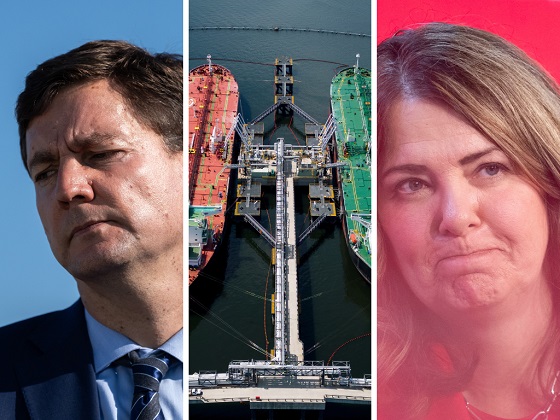
From Resource Works
Is the Trans Mountain a fake, like some say the moon landing was faked?
It’s hard to interpret otherwise a persistent claim being made in media by British Columbia’s premier, David Eby.
This week he said that Alberta is “not even using” the new Trans Mountain pipeline from Edmonton to Metro Vancouver.


Could that be true? We decided to look into it.
Here’s what we discovered.
Since May 2024 when the Trans Mountain expansion project was opened, Alberta oil has flowed steadily down the pipeline from its origin in a suburb of Edmonton.
Credible international news organizations have reported that the new pipeline is 85% full. Indications are that by the period 2027-28, it will reach as close to 100% full as it’s possible to.
The number of ship calls to the Westridge coastal loading facility in Burnaby is on track to reach 400 by the end of the year. This strongly supports the contention that Alberta oil is flowing through the pipeline.


https://www.statcan.gc.ca/o1/en/plus/8439-trans-mountain-pipeline-delivering
I often say Trans Mountain is “paying Canada’s rent,” and I mean it literally. Ottawa owns the pipeline through Trans Mountain Corporation, and it’s already sending more than a billion dollars a year back to the federal treasury in dividends, interest, and fees.
It’s also boosting export revenues by letting Alberta oil reach world markets instead of being trapped at a discount — raising royalties, taxes, and paycheques across the Prairies. And every tanker that sails from Burnaby keeps tug crews, port workers, and coastal suppliers in business. That’s real money flowing through the economy — the kind that actually pays the rent for Canada.
In total, Resource Works examined nine claims that would all need to be true if Premier Eby is telling the truth about the pipeline being empty:
Truth Test: “Alberta isn’t even using the pipeline we bought them last time.”
| Category | Claim or Implication | Evidence / Data | Source(s) | Finding / Truth Rating |
| 1. Pipeline utilization | TMX is unused or empty. | Trans Mountain reports 757,000 bpd throughput on an 890,000 bpd capacity system (≈ 85 %). | Trans Mountain Q1 2025 Financial Results; Reuters (30 Jul 2025). |  False — pipeline is heavily used and approaching full capacity. False — pipeline is heavily used and approaching full capacity. |
| 2. Export volumes | Few or no shipments. | 306 vessels loaded at Westridge Marine Terminal by Q2 2025 (~20–25 per month). | Trans Mountain Q2 2025 Results; CER Market Snapshot (Sept 2025). |  False — consistent, large-scale exports are underway. False — consistent, large-scale exports are underway. |
| 3. Financial returns | No financial benefit to Canadians. | $729 million returned to federal government YTD 2025; projected >$1.25 billion for year. | Trans Mountain Q2 2025 Results. |  False — major positive fiscal returns already realized. False — major positive fiscal returns already realized. |
| 4. Shipper commitments | No demand for pipeline capacity. | 80 % of capacity contracted to long-term shippers; 20 % reserved for spot. | S&P Global Commodity Insights (Feb 2025); CER Snapshot. |  False — demand is locked in by long-term contracts. False — demand is locked in by long-term contracts. |
| 5. Operational timeline | Project still inactive or delayed. | Commercial service began May 1 2024; steady throughput growth each quarter. | Trans Mountain Corporate Reports 2024–25. |  False — fully operational since 2024. False — fully operational since 2024. |
| 6. Regulatory data | No verified data exist. | Monthly throughput published by CER and Trans Mountain Corp. | Canada Energy Regulator (CER Data Portal). |  False — independent regulators in fact consistently confirm the data. False — independent regulators in fact consistently confirm the data. |
| 7. Market impact | No improvement to Alberta’s market access. | WCS-Brent differential narrowed; Asia exports up sharply. | CER Market Snapshot (Sept 2025); S&P Global 2025 report. |  False — there is clear evidence of improved market access. False — there is clear evidence of improved market access. |
| 8. Ownership context | B.C. or Alberta “owns” the pipeline. | Owned by Government of Canada via Trans Mountain Corporation. | Finance Canada; Trans Mountain Corp. Ownership Statement. |  Misleading — federal ownership doesn’t mean Eby “bought Trans Mountain for Alberta.” Misleading — federal ownership doesn’t mean Eby “bought Trans Mountain for Alberta.” |
| 9. Provincial benefit analysis | No benefit to B.C. or Alberta. | Royalties, tax revenue, and employment gains in both provinces; marine services in B.C. | TMX Economic Impact Assessment 2024; CER regional reports. |  False — both provinces gain fiscal and employment benefits. False — both provinces gain fiscal and employment benefits. |
Last year, on three occasions I visited the Westridge Marine Terminal, twice on tours of the land-based facilities and the third time from the water. Ships were docked at the terminal on all three occasions, and I was told by staff that they were being loaded.
I didn’t actually see any oil at the oil terminal, but…
I have to admit I did not actually see (or smell) any oil. But I’m also aware that it is very much in the interest of the Trans Mountain Corporation to never expose any oil to where it can be seen, touched or smelled, since this would result in stiff fines and other harsh repercussions.
At this point, I have to say that there is no supporting evidence whatsoever that Alberta is using the Trans Mountain pipeline as a moon landing style hoax for some nefarious goal. There is no sign of a massive fraud that required collaboration among energy regulators, Alberta oil producers, the pipeline company, the international business press, numerous federal ministers, trade union leaders, numerous environmental organizations that expend enormous efforts to try to curtail shipments of the oil that they say moves through the pipeline, and the many First Nations that have actively supported from and benefit from the project in its completed state.
Of course, I’m well aware there is a political context here. Since October 1, Premier Eby has been engaged in a war of words with Alberta Premier Danielle Smith. She announced that she is determined to see get built another new pipe from her province to a federally regulated port somewhere on the Pacific coast.
And to be clear, this isn’t about giving Alberta a free pass. Premier Smith isn’t blameless either — she’s been happy to turn complex national issues into provincial sound bites when it suits her. The difference is that Canada can’t afford leaders on either side of the Rockies who substitute theatre for truth.
Premier Eby is right when he says British Columbians should not be forced to give up opportunities because another province wants to do something. Labour market fears are legitimate as we’ve seen in the recent past. But when it comes to infrastructure and investment opportunities, time and again Canadians have learned the hard way that “a bird in the hand is worth two in the bush.” There is no guarantee that today’s opportunities, pushed away, will materialize again at any point in the future.
There’s also a public context. At no moment in recent times have British Columbia residents been more supportive of the idea of building more oil pipeline infrastructure. The following slide from a poll by Innovative Research Group (shared by pollster Greg Lyle at a recent event organized by Resource Works) is consistent with other findings:

Even without out this quite exceptional condition, the current situation deserves a vigorous public conversation. It also deserves the truthful use of information.
My final verdict is this: We can all be fully confident that the Trans Mountain Expansion is indeed 85 per cent full, that hundreds of tankers have already sailed, and that more than a billion dollars has flowed back to Canadians.
Bottom Line
The facts show a functioning, profitable national asset:
- Operational since May 2024
- 85% utilized and rising
- Hundreds of ships exporting Canadian oil
- Over $1 billion flowing back to the public purse from Trans Mountain – that’s even before counting the upstream employment and impacts
This Resource Works analysis is based on public reports from Trans Mountain Corporation (2024 & 2025), Canada Energy Regulator (2025), Statistics Canada, S&P Global Commodity Insights, and Reuters.

Stewart Muir, visting the Trans Mountain pipeline’s Westridge Marine Terminal.
Alberta
Alberta Is Where Canadians Go When They Want To Build A Better Life
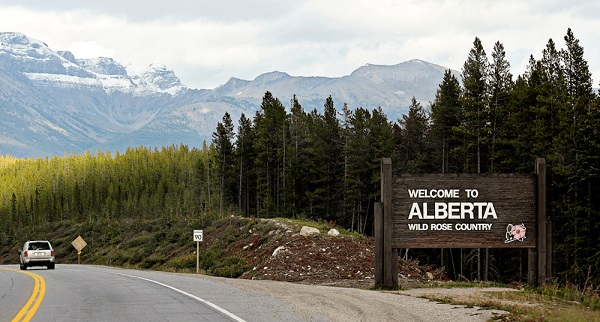
From the Frontier Centre for Public Policy
One in three Canadians chooses Alberta to start over. But to stay Canada’s top destination, it must fight Ottawa’s barriers and complacency
No province has captured the Canadian imagination quite like Alberta—and not because of oil.
One in three Canadians leaving their provinces in the past five years headed to Alberta. They were escaping stagnant wages, high housing costs and suffocating bureaucracy. They came for freedom and opportunity, and Alberta delivered. Its edge is cultural: it rewards enterprise instead of strangling it.
The question now is whether Albertans can keep that edge before Ottawa and complacency close in.
Prosperity, like liberty, vanishes the moment people stop fighting for it. If Alberta wants to remain Canada’s economic engine, it must continue to move forward, tearing down old barriers while fending off the new ones that Ottawa and other provinces are always erecting.
The cost of standing still is staggering.
Economists say provincial trade barriers (rules that prevent goods, services, and workers from moving freely) cost the Canadian economy up to $130 billion a year. For Alberta, even a 10 per cent reduction would be worth $7.3 billion a year.
When Quebec killed the Energy East pipeline that would have carried Alberta crude to eastern refineries, Alberta lost the chance to export oil worth as much as $15 billion annually.
That’s not theory. That’s lost paycheques, lost tax revenue and public services that never materialized.
Alberta has always been more willing than others to break free from the barriers that hold back growth. Liquor sales were privatized decades ago, as were property registries. The New West Partnership with Saskatchewan, Manitoba and B.C. opened labour mobility and procurement, though it has since stalled. Alberta doesn’t impose cultural tests and it doesn’t levy a provincial sales tax. Families arrive because life here is easier. They can work, start a business, raise kids or simply breathe without bureaucrats looking over their shoulder.
But cracks remain. Liquor shelves may be free, but the Alberta Gaming, Liquor and Cannabis Commission monopoly clogs the warehouse. Professional associations in law, teaching and health care are slow to recognize credentials and drown their members in red tape.
Procurement often tilts local, because, apparently, free markets stop at the city line. And like every other province, Alberta still bows to Ottawa’s anticompetition telecom rules, the dairy and poultry cartel and the banking oligopoly, systems that consistently benefit Quebec farmers and Bay Street lenders at Alberta’s expense.
And as if the old cracks weren’t enough, new barriers are appearing. One of the worst is protectionism. Canadians love mocking Donald Trump’s tariffs, yet happily embrace the same thing at home. “Buy local” sounds warm and fuzzy but props up cartels in groceries, banking, telecom and construction. The truth? We’ve imposed more barriers on ourselves than Trump ever dreamed of.
Prime Minister Mark Carney exemplified the problem when he promoted subsidies for canola farmers. It was a double insult. First, it showed Ottawa would rather hand out cash than negotiate hard. Second, it reminded farmers that the “help” isn’t free. They pay for it through their own taxes, scooped from Saskatchewan and Alberta, laundered through federal bureaucracy, then mailed back with a ribbon.
Carney also vowed that interprovincial barriers would vanish by July 1, 2025. That deadline came and went. His shiny new “process” for expediting infrastructure looks like more of the same: more Ottawa mediation that risks slowing everything down.
But it isn’t only economics standing in the way. Ideology is becoming a barrier of its own. Diversity, equity and inclusion has morphed into a system for entrenching gatekeepers. It compels people to think and act in ways they didn’t choose. It drains productivity, creates make-work compliance jobs and sorts people into categories. Worst of all, it punishes anyone who doesn’t conform. Alberta resists this infection better than most, but its universities and federally dependent agencies are already hooked.
Then comes debanking. In 2022, Ottawa showed how quickly it could freeze accounts, and banks complied without hesitation. Since then, regulators have only expanded their reach under the banner of anti–money laundering and climate policy. The message is blunt: if Ottawa decides your sector is undesirable, access to financial services can vanish. For Alberta, with its energy industry branded a planetary threat, this is no hypothetical.
A free economy is meaningless if citizens can be financially exiled from it by decree. Alberta must shield its people by turning ATB, its provincially owned bank, into a fortress institution and enshrining access to financial services as a civil right.
So what does moving forward mean? It means doubling down on being the most desirable province to live and work. That requires bold reforms. Cut regulators down to size. Protect banking access in law. Decentralize big-city governments to make them more accountable and give residents real choices. Reform health care to expand choice and slash wait times. Deregulate housing and trucking to lower costs. Confront public-sector unions that act as ideological monopolies.
Canada loves to brag about free trade, but governs like a feudal kingdom. Alberta has already shown that a freer path is possible. The task now is to resist cartels, fight the banks, tear down old walls and stop new ones from rising.
Alberta has always been a frontier of builders, risk-takers and prosperity seekers, and to thrive it must keep moving. If Alberta leads, it will stay prosperous and desirable. If it falters, doors will close.
The choice is clear: Alberta can either be strangled by regulations or break free and keep its frontier spirit alive.
Marco Navarro-Genie is vice-president of research at the Frontier Centre for Public Policy and co-author, with Barry Cooper, of Canada’s COVID: The Story of a Pandemic Moral Panic (2023).
-
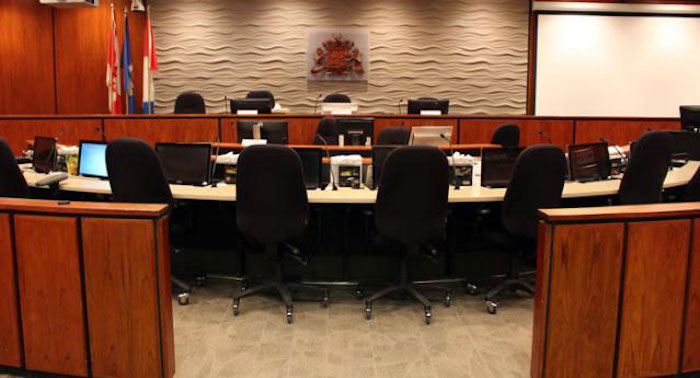
 Red Deer1 day ago
Red Deer1 day agoThe City of Red Deer’s Financial Troubles: Here Are The Candidates I Am Voting For And Why.
-
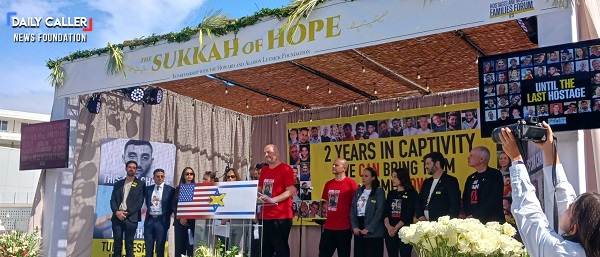
 Daily Caller2 days ago
Daily Caller2 days ago‘We’re Really, Really Close’: Freed Gaza Hostages, Relatives Have High Hopes For Trump’s Peace Plan
-
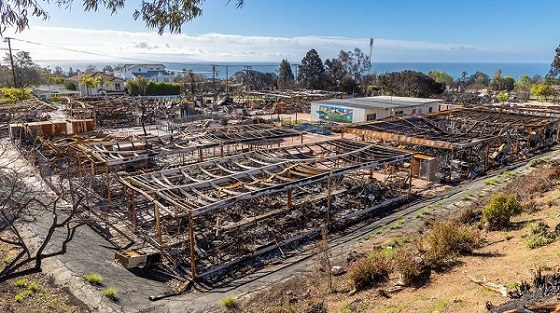
 Daily Caller2 days ago
Daily Caller2 days agoMan charged with starting Palisades Fire in L.A.
-
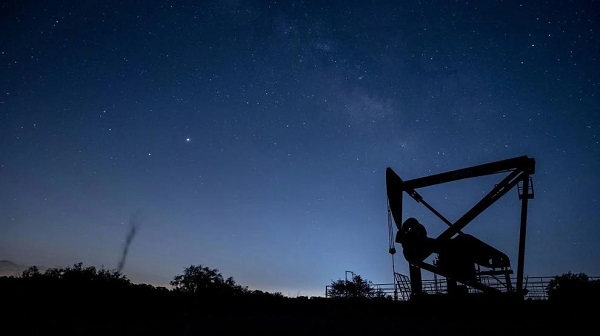
 Energy2 days ago
Energy2 days agoUS oil production reached record-high 13.6 million barrels a day in July
-
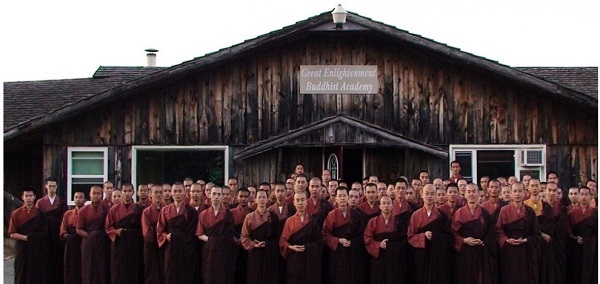
 Business1 day ago
Business1 day agoCall for Federal Inquiry as Pressure Mounts for Release of Buried Report on Buddhist Land Transactions in PEI
-
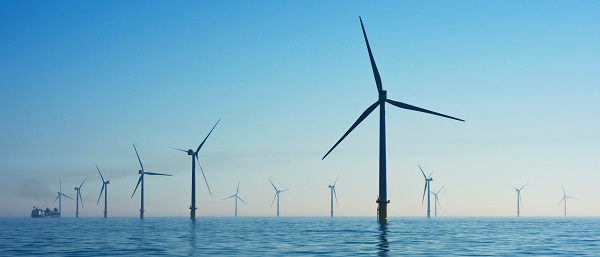
 Daily Caller2 days ago
Daily Caller2 days agoNow Is A Great Time To Be Out Of America’s Offshore Wind Business
-

 COVID-192 days ago
COVID-192 days agoCanadian commentators call Freedom Convoy leaders’ sentences ‘onerous,’ ‘too stiff’
-

 Daily Caller2 days ago
Daily Caller2 days agoTrump Shares When Both Dead And Alive Hamas Hostages Are Expected To Be Released


